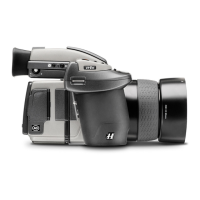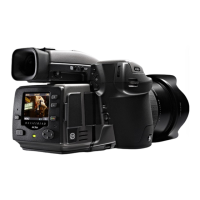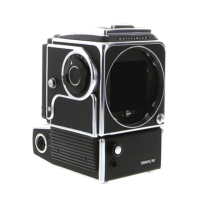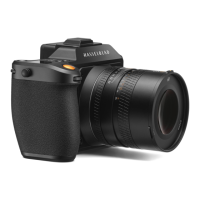284 THE HASSELBLAD MANUAL
make adjustments before you take the picture. This is somewhat similar to but much simpler
and faster than making test exposures on instant fi lm.
The histogram appears on the preview screen immediately after the picture is taken
(unless the camera or digital back is programmed for Full Screen Mode). To make the histo-
gram appear on the LCD panel on the H camera grip, you program custom option 17, SHOW
HISTOGRAM, into the camera, as described in Chapter 4 and programmed to YES (the default
setting), and the histogram appears on the LCD panel shortly after the exposure. It works
with various digital backs, but the histogram may look slightly different depending on the
back attached to the camera.
The Histogram
A histogram shows the distribution of the tonal values within an image. The values vary from the
black shadow areas (shown at the far left) to the pure white highlight areas (shown at the far
right), with the middle tones in between. The horizontal spread covers the full potential dynamic
range of the camera system. Photographers familiar with the Zone System can think of a histo-
gram as showing the tone values from zone 0 (black) on the left to zone 10 (white) on the right.
The vertical height of the curve indicates the number of pixels for each tonal value. A
high curve indicates a large number of pixels for that particular tonal value. The histogram
for a high-key image with few or any dark areas has curves mainly or completely toward the
right, whereas most of the curves for a low-key image with few or any bright areas are mostly
to the left. An image with an average tonal range from white to black has curves all the way
from left to right.
Determining Exposure from a Histogram
The interpretation of the histogram is somewhat different for different digital backs because
different backs may report ISO values to the camera in different ways. In principle, however,
regardless of the contrast range of the image, all the vertical curves must be within the left
and right margin of the histogram; that is, within the maximum potential dynamic range. They
should never go beyond the left or right margin. If the curves go beyond the right margin,
areas in the image will be totally white without any information, and the lens settings must be
changed to make them fall within the left and right margin. If the curves go beyond the left
margin, the black zone, parts of the image will be totally black, and you must change aperture
or shutter speed (or both) accordingly.
The histogram does not show the exact amount of under- or overexposure, but the
results of any corrections made in the aperture or shutter speed setting are clearly shown on
the new histogram. Overexposure in digital recording must be avoided because details in the
overexposed areas are completely lost. This should be remembered especially by photogra-
phers accustomed to working with negative fi lm and leaning toward overexposure to obtain
suffi cient detail in the shaded areas.
The Hasselblad digital systems also let you see which areas in a picture might have
overexposure. You can program the system so that overexposed pixels fl ash on the preview
screen. Details are discussed in Chapter 5.

